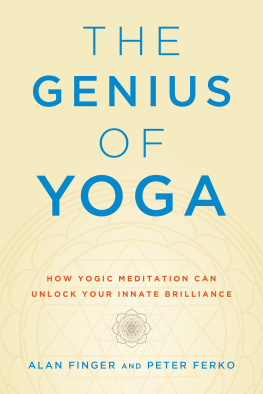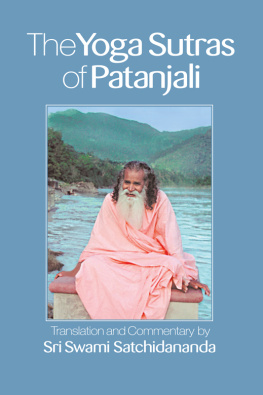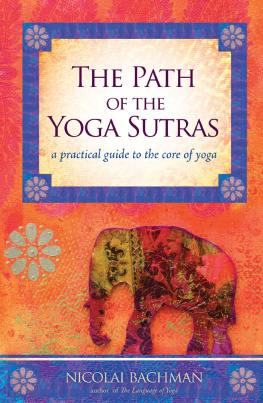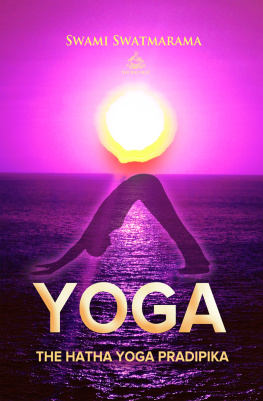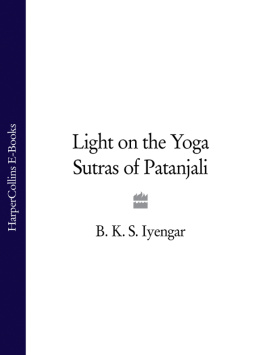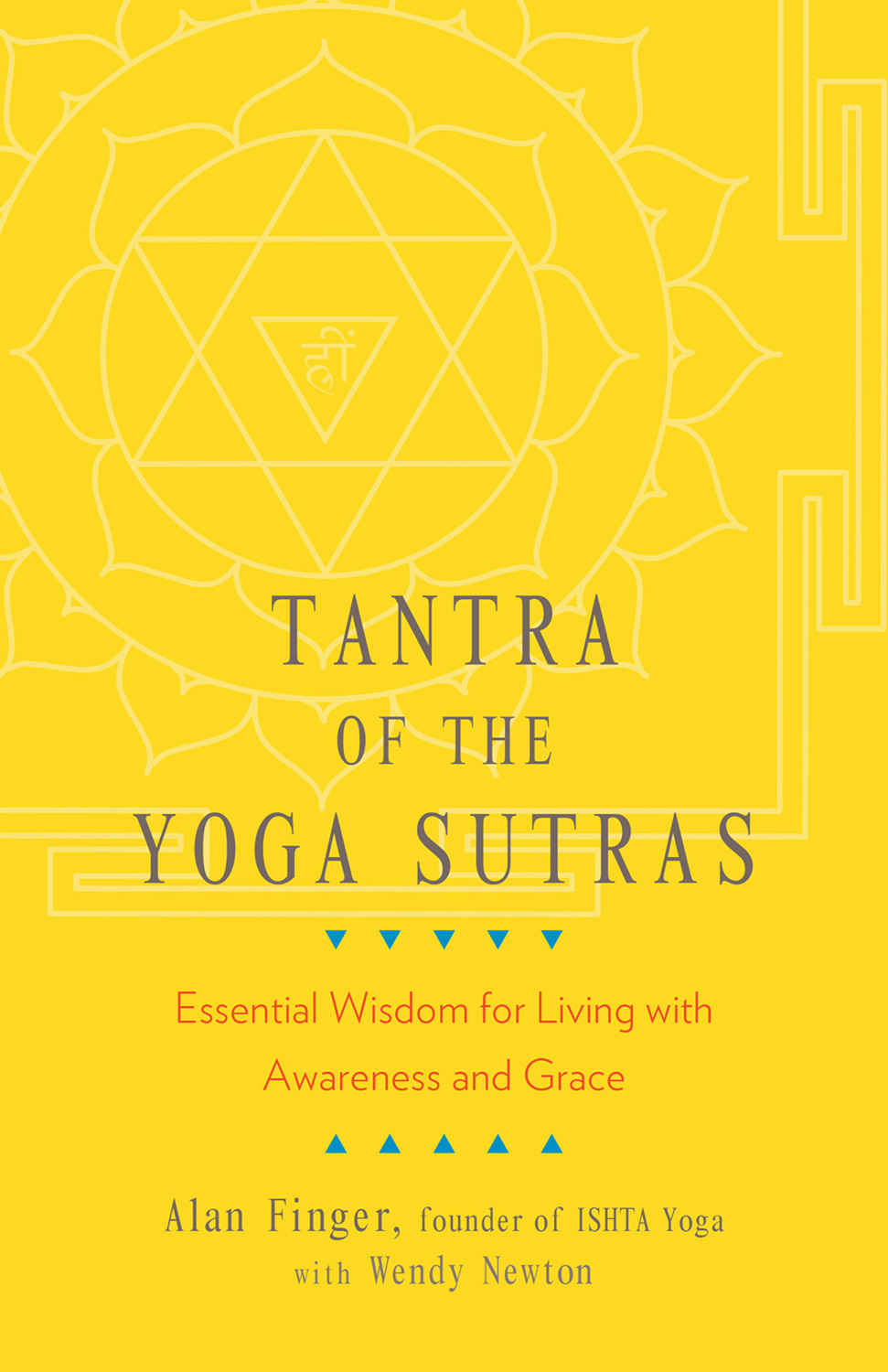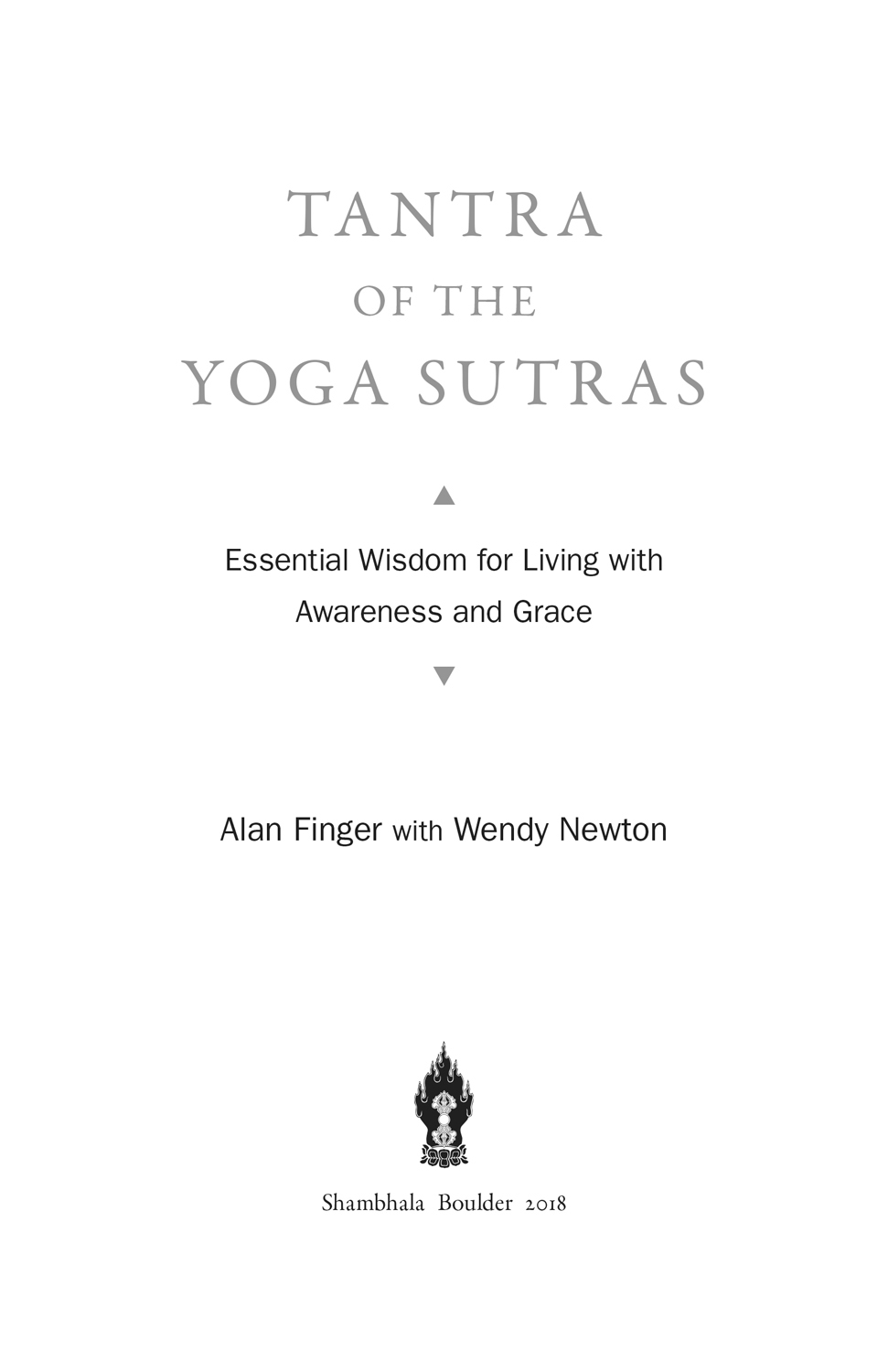NOTE : The Bagalamukhi yantra on the front cover conveys the effortless grace of a mind that has moved beyond duality and can expertly wield the power that lies beneath the surface of the false identity.
Shambhala Publications, Inc.
All rights reserved. No part of this book may be reproduced in any form or by any means, electronic or mechanical, including photocopying, recording, or by any information storage and retrieval system, without permission in writing from the publisher.
PREFACE
WHEN I was fifteen, I started studying yoga with my father, Mani Finger, and the many teachers from India who came to stay at our ashram in South Africa. I was drawn to yoga because I wanted to feel better in my body and mind. At that early stage of my training, I was not thinking about understanding consciousness or the nature of the universe. Rather, I was completely focused on simply doing my daily practice of asana, pranayama, and meditation as instructed by my teachers. But once Id gotten to a place where I had gained a bit of mental clarity and physical stability, the more philosophical questions started to come up for me. I began to ask my teachers every manner of question about the science of yoga. In their answers, they always spoke about the mind, consciousness, and the state of samadhi, the final state of meditation. Whenever they spoke about these things, they always referenced the Yoga Sutras of Patanjali. So my early interest in the Yoga Sutras arose out of my own yoga practice, guided by my direct experiences, which I got to through my practice.
When I started to explore the Yoga Sutras on my own, I noticed that there was a disconnect between what my teachers were saying, which used a scientific language, and the commentaries that I came across in the available Sutras translations, which were more devotional, or religious, in their approach. This led me to what became a lifelong process of trying to understand and express what was in the Yoga Sutras from my own scientific, practitioners point of view, rather than the more ubiquitous religious viewpoint. Our yoga school in South Africa was infused with the philosophy of Tantra, and this was the lens through which I viewed things, including the Sutras. In Tantra, there is equal emphasis on expanding ones consciousness and weaving that state of insight and inspiration back into life and living. Between my own practice, the instructions from my teachers, and my learning about the Sutras, I developed the view that Patanjali was a Tantra Yoga practitioner writing about the way yoga actually works from a scientific point of view. Patanjali doesnt talk about God or worship. It appeared to me that these concepts were more assumptions of the commentators and translators, so I always tried to look at the words that Patanjali actually wrote and to trust my own inspiration and practice to guide me toward understanding.
In 2008, we opened ISHTA Yoga in Manhattan and established a new, purely ISHTA, teacher-training program. It was important to me to include the Sutras in our training, but I found that the translation we assigned was creating some confusion for the students because it was full of what are essentially Hindu-based stories. One of the students in our training program, Elizabeth Marks, had an idea that would start me on the path to writing down my own interpretation, which had been growing in my mind for so many years. The process began with her sending me one sutra each day by e-mail. I would interpret it and send it back to her, and she started to compile them. As any of my students can tell you, I am not a very book-oriented person, so at first I was a bit skeptical of her idea. But once we started, I began to see a very clear pattern of how to show people the truth and simplicity of what I had seen in these writings. Once the basic sutras were compiled, I looked at what we had in front of us, and I knew that in order to really bring this project to fruition, I would need to bring in someone who had both a deep understanding of ISHTA Yoga and a discerning facility with language.
I asked Wendy Newton, then a senior teacher trainer and now a yogiraj in the ISHTA lineage, to work on the project with me. She had the kind of incisive, intellectual approach that I thought would help bring forth my vision. It was a little bit ironic that as Wendy and I started our work, I realized that it was precisely her knowledge of yoga that was blocking her from understanding the essence of what I was saying. My task became to try to show her that the simple, quiet mind would see these truths more clearly than a mind that was preprogrammed with a lot of information, however accurate. Much of the work of writing this book was showing the essence of the Sutras to Wendy so that she could write it down from that place of simple mind, using the tool of her precise, poetic language. It was miraculous to see her change and come into a certain ease, which she had never had before, even with all the years of yoga practice. I hope that she will write a follow-up book recording her own experience and growth from immersing herself in these teachings, because that kind of personal spiritual growth is really the intention behind Patanjalis writings. This book is about helping people discover for themselves the science of how to move out of the dual mind and into the inspirational intelligence that is really what enlightenment is.
While we have consulted many translations, we have tried to steer clear of their commentaries and interpretations so that we could listen to the essence of Patanjalis words as directly as possible with the tools available to us. In Patanjalis day, there were no computers, printing presses, or mass communications. He was handing yoga down in such a way that people could continue to learn the teachings. To do this, he used Sanskrit, the ancient language that was precisely designed to express yoga. Like the best poetry, Sanskrit is very dense and packed with layers of meaning. This makes it hard to stay true to the essence of the teaching using contemporary English, which is designed to convey such a different cultural idea. Ultimately, as much as Sanskrit is the language of yoga, language itself is not the authority. The only real authority is the truth of the experience of who we are as pure consciousness. So I have tried to stick as closely as possible to the truth of my own experience of yoga using a language that contemporary people can relate to, which is exactly what Patanjali was trying to do in his own day. Whether you are an experienced practitioner or just finding yoga for the first time, we hope that this book will serve you on your own journey of discovery of the pure essence of who you are.
HARI OM, OM TAT SAT
Alan
INTRODUCTION
Setting the Stage for Reading the Yoga Sutras through a Tantric Lens
NOT MUCH is known of Patanjali, the ancient author of the Yoga Sutras. There are many differing opinions about who he was and when exactly he lived, though the latest research says that the Yoga Sutras was written sometime around the fourth century C.E . Whatever the truth of the matter, it seems evident to us that Patanjali was a practicing yogi writing for his contemporary community of yoga practitioners and students. The Sutras do not impart philosophy in a vacuum, nor are they intended for intellectual dabblers or the general public. In their essence, the Yoga Sutras form a practical book about how to experience samadhi, the state of oneness that is at the center of all authentic yoga practice.


